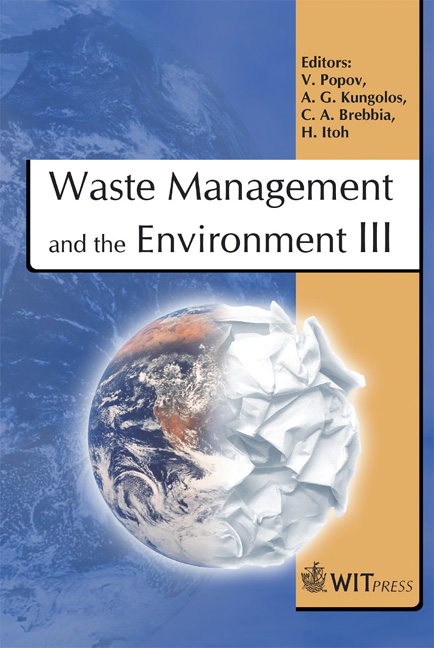Development Of A Recycling Technique Of Used Glass By Conversion To Porous Materials
Price
Free (open access)
Transaction
Volume
92
Pages
6
Published
2006
Size
1,042 kb
Paper DOI
10.2495/WM060111
Copyright
WIT Press
Author(s)
K. Yanagisawa, N. Bao, M. Kariya, A. Onda, K. Kajiyoshi, Z. Matamoras-Veloza & J. C. Rendón-Angeles
Abstract
The powders of used glass bottles were converted to porous plates by a newly developed technique, which involves two steps, hydrothermal treatment of glass powders at low temperatures and calcination at high temperatures in air for foaming. The ordinary method to prepare porous materials from glass needs vesicants such as calcium carbonate and silicon carbide that decompose at high temperatures to produce gas, and the gas is trapped in softened glass to form pores. The new technique can produce porous materials without any vesicants. Water incorporated into the glass structure by hydrothermal treatments acts as a vesicant. Water diffuses into the glass structure by hydrothermal treatments at low temperatures of around 200°C, and is released as vapor to form pores in the softened glass, when the hydrothermally treated glass is heated at high temperatures over 650°C. Thus, this process gives porous materials with a fine microstructure including closed pores at low temperatures in comparison with the ordinary method. Porous plates (45 x 45 x 3 cm3 in size) with a bulk density of 0.45g/cm3 were produced by hydrothermal treatment of the glass powder at 183°C in a large autoclave with an inside volume of 2.5 m3, followed by calcination at 800°C in a continuous furnace with 18 m in length. Keywords: recycling of used glass, porous materials, hydrothermal treatment, foaming.
Keywords
recycling of used glass, porous materials, hydrothermal treatment, foaming.





